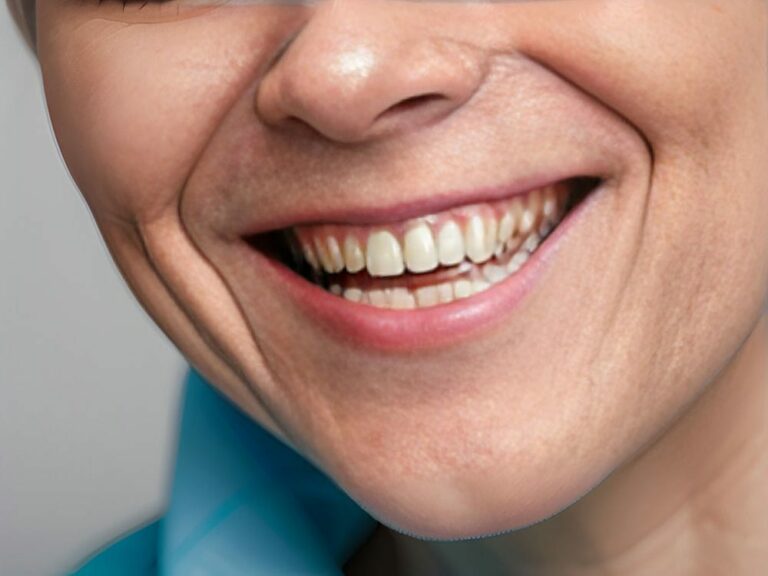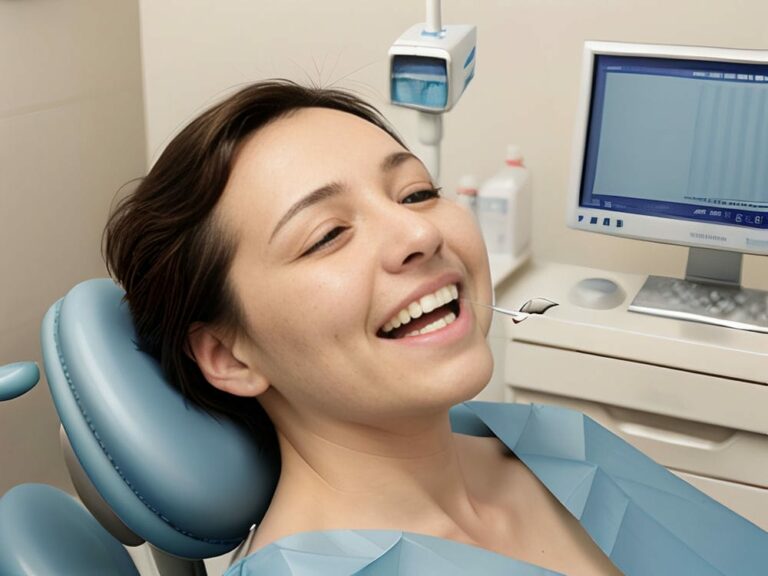The Historical Development of Ceramics in Dental Restorations
The historical development of ceramics in dental restorations has been a revolutionary journey in the field of prosthodontics. Over the years, advancements in materials and techniques have transformed the way dental professionals approach the fabrication of ceramic restorations. This evolution has paved the way for more natural-looking and durable prosthetic solutions.
In the past, ceramics were primarily used for fabricating bridges, which are fixed dental restorations used to replace missing teeth. Traditional porcelain-fused-to-metal (PFM) bridges were commonly utilized due to their strength and aesthetic appeal. However, these restorations often resulted in an opaque appearance due to the metal substructure beneath the ceramic layer.
As technology progressed, veneers became another popular application for ceramics in prosthodontics. Veneers are thin shells made of ceramic material that are bonded onto the front surface of teeth to improve their appearance. With advancements in ceramic materials, such as lithium disilicate and zirconia-reinforced glass ceramics, veneers became more translucent and natural-looking. Dental professionals could now achieve highly esthetic results while preserving tooth structure.
Inlays are another area where ceramics have played a significant role in dental restorations. Inlays are custom-made fillings that fit within the cavity preparation of a tooth to restore its function and aesthetics. Historically, gold was commonly used for fabricating inlays due to its long-lasting properties. However, with the advent of CAD/CAM technology and high-strength ceramics like alumina and zirconia, dental professionals now have more options available for fabricating esthetic and durable inlays.
The historical development of ceramics in dental restorations has revolutionized prosthodontic treatments. From traditional PFM bridges to modern veneers and high-strength ceramic inlays, dentists can now provide patients with highly esthetic and functional prosthetic solutions. As technology continues to advance, we can expect further innovations in ceramic materials and techniques, ultimately improving patient outcomes and satisfaction.
Advancements in Prosthodontic Materials for Ceramic Restorations
Advancements in Prosthodontic Materials for Ceramic Restorations
In recent years, there have been significant advancements in prosthodontic materials for ceramic restorations. These advancements have allowed dental professionals to provide patients with even more natural-looking and durable prosthetic solutions. One area where these advancements have been particularly impactful is in the fabrication of onlays.
Onlays are similar to inlays, but they cover a larger portion of the tooth’s surface. They are used to restore teeth that have extensive damage or decay and can be made from various materials, including ceramics. With the development of high-strength ceramics like zirconia, dental professionals now have a material that is not only aesthetically pleasing but also strong enough to withstand the forces of chewing and biting.
Another area where advancements in prosthodontic materials have made a significant impact is in the field of dental implants. Dental implants are artificial tooth roots that are surgically implanted into the jawbone and topped with a crown or bridge. In the past, metal-based materials were commonly used for implant-supported restorations. However, with the development of ceramic materials like zirconia and lithium disilicate, dental professionals can now provide patients with more natural-looking implant restorations that blend seamlessly with their existing teeth.
Furthermore, advancements in prosthodontic materials have greatly improved the fabrication of dentures. Dentures are removable prosthetic devices used to replace missing teeth and surrounding tissues. Traditionally, dentures were made from acrylic resin, which often lacked durability and esthetics. With the advent of high-strength ceramics like zirconia and CAD/CAM technology, dental professionals can now fabricate dentures that are not only more durable but also more lifelike in appearance.
With ongoing advancements in prosthodontic materials for ceramic restorations, dental professionals can continue to provide patients with superior esthetic and functional outcomes. Whether it be through the use of high-strength ceramics for onlays, natural-looking materials for implant restorations, or improved denture fabrication techniques, these advancements have truly revolutionized the field of prosthodontics. As research and innovation continue to progress, we can expect even more exciting developments in the future.
Understanding the Role of Biomaterials in Prosthodontics
Advancements in prosthodontic materials for ceramic restorations have greatly improved the field of dentistry. Dental professionals now have access to high-strength ceramics like zirconia, which allows them to create onlays that are both aesthetically pleasing and durable. This is particularly beneficial for restoring teeth with extensive damage or decay. The development of ceramic materials has also had a significant impact on dental implants, as it has allowed for the creation of more natural-looking implant restorations that blend seamlessly with existing teeth.
Furthermore, these advancements have revolutionized the fabrication of dentures. In the past, dentures made from acrylic resin lacked durability and esthetics. However, with the introduction of high-strength ceramics like zirconia and CAD/CAM technology, dental professionals can now create dentures that are not only more durable but also more lifelike in appearance.
Overall, these advancements in prosthodontic materials have greatly improved the field of dentistry by providing dental professionals with superior esthetic and functional outcomes. With ongoing research and innovation, we can expect even more exciting developments in the future. The use of biomaterials in prosthodontics continues to play a crucial role in enhancing oral aesthetics and improving patient satisfaction.
The Importance of Ceramic Selection in Prosthodontic Treatments
Advancements in prosthodontic materials have paved the way for significant improvements in dental treatments, particularly in tooth reconstruction. The use of high-strength ceramics like zirconia has revolutionized the field by providing both aesthetic and durable solutions for restoring damaged or decayed teeth. This has greatly benefited patients who require extensive dental work.
In the past, dentists faced challenges in creating restorations that were both aesthetically pleasing and long-lasting. However, with the development of high-strength ceramics, dental professionals can now achieve superior outcomes. Zirconia, in particular, offers excellent strength and durability while also being highly customizable to match the natural color and shape of existing teeth. This allows for seamless integration with the patient’s smile.
Furthermore, advancements in ceramic materials have also had a significant impact on dental implant restorations. With the use of high-strength ceramics, implant restorations can be created to closely mimic natural teeth, resulting in a more natural-looking smile. This not only enhances oral aesthetics but also improves patient satisfaction.
The continuous evolution of prosthodontic materials is driving progress in tooth reconstruction treatments. With ongoing research and innovation, we can expect even more exciting developments in the future. By carefully selecting the appropriate ceramic material for each individual case, dental professionals can ensure optimal esthetic and functional outcomes for their patients’ dental restorations.
A Closer Look at Porcelain Crowns in Prosthodontics
The use of porcelain crowns in prosthodontics has been a game-changer in the field of dental restorations. Porcelain crowns offer excellent esthetics and can be customized to match the color and shape of existing teeth, resulting in a seamless integration with the patient’s smile. This technique allows dental professionals to achieve superior esthetic outcomes, boosting patient confidence and satisfaction.
One of the key advantages of porcelain crowns is their ability to closely mimic the natural color and translucency of teeth. With advancements in color-matching techniques, dental professionals can now create crowns that are virtually indistinguishable from natural teeth. This not only enhances the overall appearance but also improves the patient’s self-esteem and quality of life.
In addition to their aesthetic benefits, porcelain crowns also offer impressive strength and durability. Modern ceramic materials used for crown fabrication have undergone significant improvements, making them highly resistant to wear and fractures. This ensures that the restorations can withstand daily biting forces without compromising their integrity or longevity.
As dental technology continues to advance, we can expect further refinements in porcelain crown techniques, color matching capabilities, and material strength. Dental professionals should stay abreast of these developments to provide patients with the best possible outcomes for their dental restorations. By utilizing high-quality ceramics and employing precise techniques, dental professionals can continue to deliver exceptional results that improve both oral health and overall well-being.
Innovations in Ceramic Material Composition for Dental Restorations
The use of ceramics in prosthodontic treatments has revolutionized the field of dental restorations. Over the years, there have been significant advancements in ceramic material composition, resulting in improved durability, biocompatibility, and esthetics. These innovations have allowed dental professionals to provide patients with highly functional and aesthetically pleasing dental restorations.
Durability is a crucial factor when it comes to dental restorations. Ceramic materials used in prosthodontics are now engineered to be highly resistant to wear and fractures. This means that patients can confidently bite and chew without worrying about damaging their crowns or bridges. The increased durability also ensures that the restorations will last for an extended period, reducing the need for frequent replacements.
Biocompatibility is another essential aspect of ceramic materials used in prosthodontics. These materials are designed to be compatible with the oral environment, minimizing allergic reactions and tissue irritation. This biocompatibility is crucial for patient comfort and overall oral health.
In terms of esthetics, modern ceramic materials offer exceptional color-matching capabilities and translucency, allowing dental professionals to create restorations that blend seamlessly with natural teeth. This not only enhances the appearance of the smile but also boosts patient confidence and self-esteem.
As technology continues to advance, we can expect further innovations in ceramic material composition for dental restorations. Dental professionals should stay informed about these developments to provide their patients with the best possible outcomes. By utilizing durable, biocompatible ceramics with excellent esthetic properties, dental professionals can continue to deliver high-quality dental restorations that improve both oral health and overall well-being without compromising on aesthetics or functionality
Enhancing Aesthetics and Functionality with Ceramic Prosthetics
The use of ceramics in prosthodontic treatments has not only improved the durability and biocompatibility of dental restorations but has also significantly enhanced their esthetics. The advancements in ceramic material composition have revolutionized the field of dentistry, allowing dental professionals to provide patients with highly functional and aesthetically pleasing dental restorations.
One of the key innovations in ceramic material composition is its increased durability. These materials are now designed to be highly resistant to wear and fractures, ensuring that patients can confidently bite and chew without worrying about damaging their crowns or bridges. This increased durability also means that the restorations will last for a longer time, reducing the need for frequent replacements.
Another significant aspect of ceramic materials is their biocompatibility. They are specifically engineered to be compatible with the oral environment, minimizing allergic reactions and tissue irritation. This biocompatibility is crucial for patient comfort and overall oral health. By using biocompatible ceramics, dental professionals can ensure that their patients not only have functional restorations but also ones that promote long-term oral well-being.
In addition to durability and biocompatibility, modern ceramic materials offer exceptional esthetic properties. Their color-matching capabilities and translucency allow dental professionals to create restorations that blend seamlessly with natural teeth. This not only enhances the appearance of the smile but also boosts patient confidence and self-esteem. With these innovative ceramic materials, dental professionals can achieve both functionality and aesthetics in their prosthetic treatments.
As technology continues to advance, we can expect further innovations in ceramic material composition for dental restorations. Dental professionals should stay informed about these developments to provide their patients with the best possible outcomes. By utilizing durable, biocompatible ceramics with excellent esthetic properties, dental professionals can continue to deliver high-quality dental restorations that improve both oral health and overall well-being without compromising on aesthetics or functionality
Considerations for Longevity and Durability of Ceramic Restorations
The longevity and durability of ceramic restorations are essential considerations in prosthodontic treatments. Dental professionals must ensure that the restorations can withstand the daily wear and tear of biting and chewing, as well as the stresses placed upon them in the oral cavity.
To achieve long-lasting ceramic restorations, proper preparation techniques and adhesive bonding protocols are crucial. The tooth preparation should be done with precision to ensure adequate space for the ceramic material and to minimize stress on the restoration. Additionally, dental professionals should carefully follow adhesive bonding protocols to ensure a strong bond between the ceramic restoration and the natural tooth structure.
Regular maintenance and preventive measures can also contribute to the longevity of ceramic restorations. Patients should be educated about proper oral hygiene practices, including regular brushing, flossing, and professional cleanings. They should also be advised to avoid habits such as teeth grinding or using their teeth as tools, which can put excessive strain on the restorations.
In addition to these considerations, dental professionals should stay updated with advancements in ceramic material composition. Newer materials may offer improved strength characteristics or enhanced resistance to wear and fractures. By utilizing these innovations, dental professionals can provide patients with ceramic restorations that not only look aesthetically pleasing but also have a longer lifespan.
By considering factors such as proper preparation techniques, adhesive bonding protocols, regular maintenance, preventive measures, and advancements in ceramic materials, dental professionals can ensure that their patients receive durable and long-lasting ceramic restorations. These considerations are vital for achieving successful outcomes in prosthodontic treatments while maintaining both functionality and aesthetics without compromising one over the other
Contemporary Techniques for Bonding Ceramic Restorations to Teeth
Contemporary Techniques for Bonding Ceramic Restorations to Teeth
When it comes to bonding ceramic restorations to teeth, dental professionals have a variety of contemporary techniques at their disposal. These techniques ensure a strong and durable bond between the restoration and the natural tooth structure.
One commonly used technique is the etch-and-rinse method. This involves etching the tooth surface with an acidic gel, such as phosphoric acid, to create microretention for better bonding. After rinsing off the gel, a bonding agent is applied to the tooth surface before cementing the ceramic restoration in place. This technique provides good adhesion and has been widely used for many years.
Another technique gaining popularity is the self-etch adhesive system. With this method, a self-etch primer is used instead of phosphoric acid to condition the tooth surface and simultaneously prime it for bonding. The primer contains acidic monomers that etch and penetrate into the enamel and dentin, creating a strong bond with both structures. This technique offers simplified application steps and reduced sensitivity compared to traditional etch-and-rinse methods.
Recently, an alternative approach known as universal adhesive systems has emerged. These systems combine the benefits of both etch-and-rinse and self-etch techniques into one product. Dental professionals can choose whether they want to use it as a total-etch or self-etch adhesive depending on their preference or specific clinical situation. Universal adhesive systems offer versatility while maintaining excellent bond strength.
In summary, contemporary techniques for bonding ceramic restorations include the etch-and-rinse method, self-etch adhesive systems, and universal adhesive systems. These techniques provide options for dental professionals to achieve strong and durable bonds between ceramic restorations and natural teeth. By staying informed about these advancements in bonding protocols, dental professionals can ensure successful outcomes in prosthodontic treatments while maximizing longevity and patient satisfaction without compromising functionality or aesthetics
Future Trends and Technologies in Ceramics for Prosthodontic Treatments
The future of ceramics in prosthodontic treatments looks promising, with advancements in materials and technologies that aim to improve functionality and aesthetics. One trend that is gaining traction is the use of digital technology in the fabrication of ceramic restorations. Computer-aided design and computer-aided manufacturing (CAD/CAM) systems allow for precise and accurate shaping of ceramic restorations, resulting in better fit and aesthetics. This technology also enables dental professionals to create restorations faster, reducing chair-side time for patients.
Another exciting development is the use of zirconia as a ceramic material for prosthodontic treatments. Zirconia offers excellent strength and durability, making it ideal for long-span bridges and implant-supported restorations. It can be milled or layered with porcelain to achieve lifelike aesthetics, making it a versatile option for dental professionals.
In addition to these advancements, researchers are also exploring the use of bioactive ceramics in prosthodontics. Bioactive ceramics have the ability to interact with biological tissues, promoting tissue regeneration and integration. This could potentially improve the longevity and success of prosthodontic treatments by enhancing the bond between the restoration and natural tooth structure.
As advancements continue to be made in ceramics for prosthodontic treatments, dental professionals can expect more efficient workflows, improved aesthetics, and enhanced functionality. These developments will ultimately benefit both clinicians and patients by providing more durable and aesthetically pleasing restorations. The future of ceramics in prosthodontics is indeed bright as technology continues to evolve and refine treatment options.
FAQs
Q: What is prosthodontics?,
A: Prosthodontics is a branch of dentistry that focuses on the restoration and replacement of missing teeth and oral structures.,
Q: Why are ceramics commonly used in prosthodontic treatments?,
A: Ceramics are commonly used in prosthodontic treatments due to their excellent aesthetic properties, biocompatibility, and durability.,
Q: What are the different types of ceramics used in prosthodontics?,
A: The different types of ceramics used in prosthodontics include porcelain, zirconia, and lithium disilicate.,
Q: How does porcelain compare to other ceramics in prosthodontic treatments?,
A: Porcelain is known for its excellent aesthetic properties, making it a popular choice for dental restorations. However, it is more prone to fracture compared to other ceramics.,
Q: What are the advantages of using zirconia in prosthodontic treatments?,
A: Zirconia offers superior strength and durability, making it suitable for both single and multiple unit restorations. It is also highly biocompatible.,
Q: Can ceramics be used for full mouth reconstruction?,
A: Yes, ceramics can be used for full mouth reconstruction. They can be used to restore multiple missing teeth or create complete dentures.,
Q: How long do ceramic restorations typically last in prosthodontic treatments?,
A: With proper care and maintenance, ceramic restorations can last for 10-15 years or even longer.,
Q: Are there any potential drawbacks or disadvantages to using ceramics in prosthodontic treatments?,
A: Some potential drawbacks of using ceramics include the risk of fracture, high cost compared to other materials, and the need for skilled dental professionals for precise fabrication.,
Q: Can ceramics be used in implant-supported prosthodontic treatments?,
A: Yes, ceramics can be used in implant-supported prosthodontic treatments. They can be used to create natural-looking dental crowns and bridges on dental implants.,
Q: Is it possible to repair or modify ceramic restorations in prosthodontic treatments?,
A: In some cases, ceramic restorations can be repaired or modified if minor damage or adjustments are needed. However, extensive damage may require replacement.


















